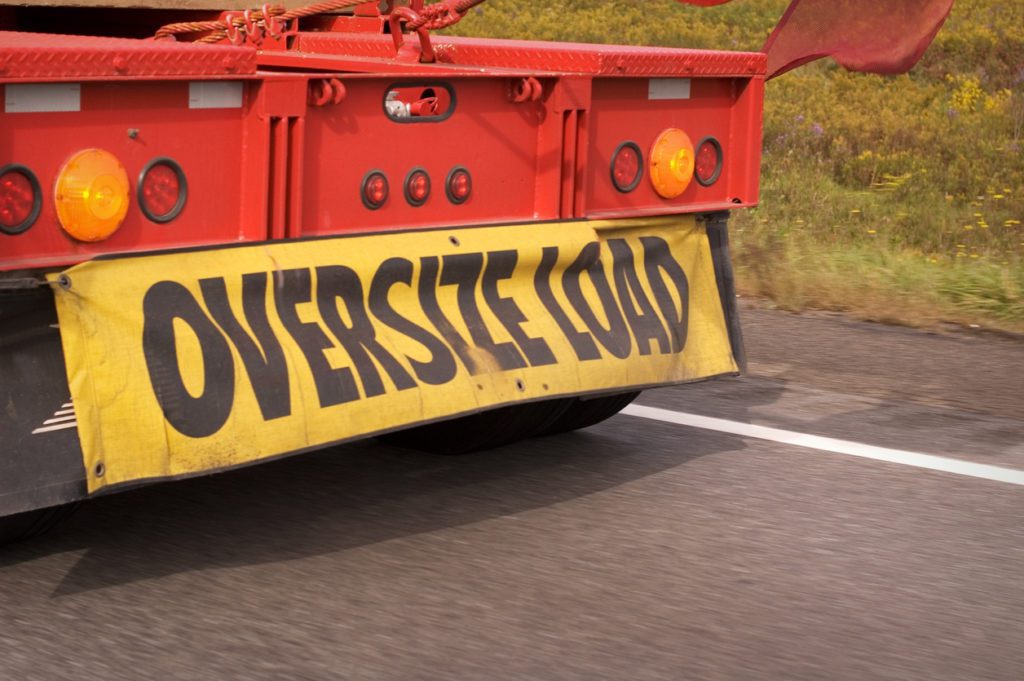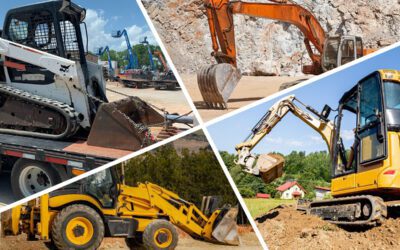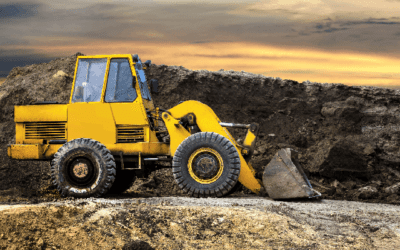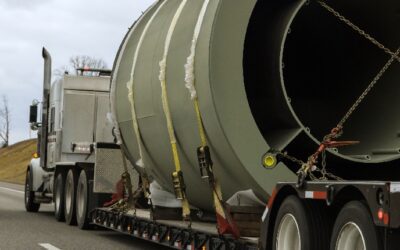Wide Load vs. Oversize Load: The Differences Explained
Regular shipping containers can handle much of the freight trucking companies ship, but some items cannot be broken down to fit into them, so they are treated as wide loads and oversized loads. As you might expect, hauling either wide loads or oversize loads can be challenging since there are so many factors to consider, including special permits, safety equipment, state regulations, pilot cars, route selection, travel times, and oversize load/wide load banners and signage.
The U.S. Department of Transportation does not issue oversize load permits. Instead, they are handled at the state level, each with its own regulations. And since wide load regulations and oversize load regulations can change from state to state, shippers often spend more time preparing these over-dimensional loads than truck drivers spend delivering them.
You’ll often hear the terms wide load and oversize load used interchangeably, but these are specific services, and everyone hauling cargo with size and weight limits should understand how they differ. Knowing these fundamental differences can ensure that your shipment travels legally and with few issues.
Let’s start with wide loads, followed by oversized loads, and a comparison of the two.
What Does a Wide Load Mean?
The width limitations for most loads are up to 8′ 6″ wide, while the typical legal length is between 48 and 53 feet long. The maximum height is 8′ 6″ high, and the maximum weight is 46,000 pounds. Although the maximum shipping dimensions will vary by state, if your load exceeds 8′ 6″ wide but doesn’t exceed any other dimensions (length, height, and weight), it will probably qualify as a wide load and require special permits.
With standard highway lanes 12 feet wide, loads that exceed this width will likely require escort vehicles, those small cars that look for potential problems along the route. And if the load’s width is more than 16 feet, it comes under the “super load” category and could result in road closures and police escorts since the item could impact traffic conditions.
Remember, each state has its rules and restrictions, meaning when you ship a wide load through multiple states, you must obtain clearance from each one.
What are Some Examples of Wide Loads?
Here are several examples of shipments that will likely qualify as wide-load shipments since they exceed the 8.5-feet width of a flatbed trailer:
- Mobile homes and prefabricated housing
- Construction equipment such as bulldozers and large dump trucks
- Boats, trucks, and other vehicles
- Agricultural equipment, including harvesters, bailers, and threshers
What is an Oversized Load?
Although all wide loads are technically oversized loads, the reverse is not valid. Oversized loads exceed any of the guidelines we outlined above. For example, hauling windmill blades could easily exceed the length limits of 53 feet but not the limits for width, height, and weight, yet it is an oversized load because it surpasses one of the dimensional limits.
Another example could be hauling a piece of construction equipment that does not go beyond height, weight, and length parameters but weighs over 46,000 pounds. Although it has no impact on traffic conditions because of its dimensions, it’s still an oversized load since it tops the weight restrictions.
Remember that the criteria for oversized loads, as with wide loads, can differ among states. For example, your load might be oversized if it’s over 50 feet long in one state but 53 feet in another. When you’re hauling across state lines, you must understand the rules to act accordingly and avoid costly issues.

What are a Few Examples of Oversize Loads?
Here are several shipments that are oversized loads, even though they do not exceed the 8.5-feet width of a flatbed trailer:
- Construction materials, including pipes and steel beams
- Manufacturing equipment, such as conveyors and assembly lines
- Agricultural equipment like tractors
- Construction equipment, such as cranes and storage tanks (ie. Komatsu WA475-10 Wheel Loader)
How Do You Obtain an Oversized Load Permit?
To get an oversize load or wide load permit, you will need to get in touch with each state agency and fill out the appropriate application. The U.S. Department of Transportation can supply links to each state’s permitting office on its website. Still, many truckers and wide-load trucking carriers use a permitting service to handle multi-state shipments.
In addition to permits, carriers sometimes must meet additional regulations such as the Highway Use Tax (HUT) in New York, fuel permits in Kentucky or Nevada, or Unified Carrier Registration (UCR) in multiple states.
Since special permits and pilot vehicles can be costly, permit fees concern truck drivers and heavy-haul operators. These permits can range from $15 to $70 depending on the states you’ll pass through, route, destination, load size, and processing fees. You can obtain a one-time permit, multi-haul permits for shipments of similar cargo, or even annual permits for consistently shipping the same oversized freight.
What is the Difference Between a Wide Load and an Oversize Load?
A few characteristics distinguish wide loads from oversize loads. Here are three of them:
- Wide loads are typically too wide to fit within the legal limit of 8.5 feet for highway travel, while oversize loads exceed the legal limits for length, width, height, or weight.
- Another difference is wide loads typically must be transported using specialized equipment like flatbed trailers. On the other hand, oversize loads can be shipped on standard trucks and trailers, but they might require permits and escort vehicles.
- Wide loads are usually only allowed on specific routes pre-approved by the appropriate authorities. In contrast, oversize loads could be allowed on any route, although permits and escorts might be required.
- Wide and oversized loads provide challenges, so understanding the primary differences between them can ensure your cargo travels legally and safely.
What to Consider When Hauling Wide and Oversized Loads
Keep in mind that each state has different wide load regulations, and you need to consider all of them:
Special Permits
Contact each state’s permitting agency or use a permitting service to obtain the proper permits along your route. It could cost you thousands of dollars in fines for not complying with the requirement to get permits, not following an approved route, or traveling during times that are not allowed.
Safety Equipment
You need to let other drivers know you’re hauling a wide load, and they should use extra care when driving near you. Most states require wide loads to have safety equipment, such as flags, oversize load signs, or oversize load banners.
Most states require a black and yellow “Oversize Load” or “Wide Load” banner at the front and rear of the hauling vehicle. Whenever the load is wider than the truck bed, these wide loads should have an 18” square red or orange flag at the corner of the shipment.
You could be required to have lights on your truck where the flags are located when you travel at night or in low visibility. Some states want flashing or rotating lights on top of the truck.
Pilot Vehicles
Some state regulations require escort vehicles or pilot cars for over-dimensional cargo. These passenger cars surround an oversize load to provide a barrier of protection and alert other drivers of a wide load. Some states require pilot cars for all wide loads, while others mandate them only for loads more than 12 feet wide. Sometimes, you must provide two escort vehicles—one in front and one in the back.
Travel Times
Some states restrict when oversize loads can travel with typical restrictions limiting the use of roads at night, on weekends, and on holidays. When a pilot vehicle is required, most states will only allow shipments 30 minutes before sunrise and 30 minutes after sunset. Permitted travel times vary by state and sometimes by town or community.
Permit Fees
Special permit costs vary by state and can be as high as $70 or more. You may set up an account in some states and receive a discount for frequent wide loads. Annual permits are also available if you haul similar loads over the same routes.
We Can Help You Set Up Your Next Wide or Oversize Load
The Titan Worldwide logistics team understands the world of wide and oversize loads. And we will share our knowledge and experience with you to make your next over-dimensional or overweight shipment as hassle-free as possible. We can help you prepare your shipment, find the right truck for your wide load, obtain permits, estimate travel times, and arrange pilot cars. We can also supply oversize load banners, lights, and other safety equipment.
Titan Worldwide has the expertise to be your one-stop transport company! Check out our Oversize Load Shipping Services and comprehensive Logistics Services for more information and solutions for your business, or contact us today for a free quote.




